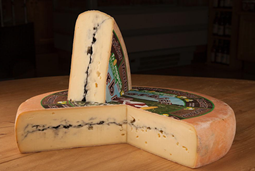CJEU: REGISTRATION PROTECTS NOT ONLY THE DESIGNATION OF ORIGIN, BUT ALSO THE SHAPE AND APPEARANCE OF THE PDO PRODUCT
26/01/2021
In its judgment of 17 December 2020, issued at the end of case C-490/19 (“Syndicat interprofessionnel de défense du fromage Morbier v. Société Fromagère du Livradois SAS”), the European Union Court of Justice was called upon to rule on the protection of the Protected Designation of Origin (PDO), clarifying that under EU law it is possible to prohibit also the imitation of the shape and appearance of a PDO product, if the imitated elements may cause confusion to the consumer.
IThe case
“Morbier” is a cheese produced in the Jura mountains (France) which has been registered as a PDO under European legislation since 22nd December 2000. Société Fromagère du Livradois (hereinafter ‘SFL’) is not located in the geographical area designated for the name “Morbier”, which is why it produces cheese under the different name “Montboissié du Haut Livradois”. Although the two cheeses have different names, they both share the same aesthetic feature, namely a horizontal black stripe encircling the whole of the cheese, which is explicitly identified in the description of the PDO “Morbier” product.


The dispute in question stems from the proceedings brought in 2013 by the Syndicat interprofessionel de défense du fromage Morbier (Morbier Cheese Protection Consortium) against SFL, seeking an order that SFL cease all direct or indirect commercial use of the name ‘Morbier’ PDO for products not protected by it, all misuse of the name, any usurpation, imitation or evocation of the PDO, any other false or misleading indication as to the provenance, origin, nature or essential qualities of the product likely to mislead the consumer as to the true origin of the product, any other practice likely to mislead the consumer as to the true origin of the product, and in particular any use of a black stripe separating two parts of the cheese. The application for an injunction thus formulated was, however, not granted at first instance. In particular, in a decision of 2017, the Cour d’Appel de Paris stated that PDO registration was not intended to protect the appearance or characteristics of a product, but was limited to protecting its name, and that the manufacture of different products using the same working techniques was not per se prohibited.
The consortium, after its claims for protection were not upheld, appealed the decision of the Court of Appeal to the French Court of Cassation. On this occasion, the Cassation, by way of a preliminary reference, asked the European Union Court of Justice for clarification not only on the rules concerning the use by third parties of a registered name, but also on the possibility of prohibiting, on the basis of EU legislation, the reproduction of shapes and characteristics of a product with a designation of origin.
The CJEU decision
The Court of Justice is thus called upon to rule on this practice and, in particular, to clarify whether the reproduction of the shapes and characteristics of a product bearing the PDO mark is likely to mislead consumers as to the real origin of the product. The CJEU first of all clarifies the interpretation of both Article 13(1) of Council Regulation No 510/2006 of 20 March 2006, in force at the time of the facts, and Article 13(1) of Regulation No 1151/2012 of the European Parliament and of the Council, which replaced the first regulation on quality policy for agricultural products and foodstuffs, stating that “registered names shall be protected against […] any other practice liable to mislead the consumer as to the true origin of the products”. According to the Court, both rules must be interpreted broadly so as not only to prohibit the use by third parties of the registered name, but also to preclude them from reproducing the characteristic shape or appearance of the PDO product, where such a practice is liable to mislead the consumer into believing that the product in question is covered by the registered name. Therefore, although the protection provided for by Regulations Nos 510/2006 and 1151/2012 relates expressly to the registered name and not to the product to be protected and, more specifically, to its shape or appearance, PDOs are protected precisely because of those particular characteristics which distinguish the product. For this reason, according to the CJEU, it is not possible to exclude a priori that the reproduction of such characteristics attributable to a product covered by a registered name, without that name appearing on the product, may fall within the scope of the rules in question. Lastly, the judgment states that it is necessary to ascertain on a case-by-case basis whether that reproduction is likely to mislead the European consumer – who tends to be well-informed and circumspect –, having regard not only to the relevance and distinctive character of the elements being imitated, but also to all the factors in the case (i.e. the manner in which the product is presented to the public and marketed) which are likely to mislead the consumer.
Federica Gattillo
